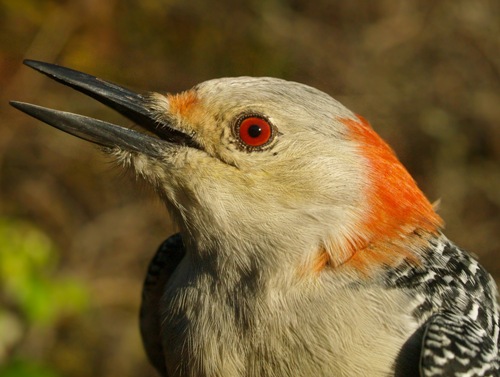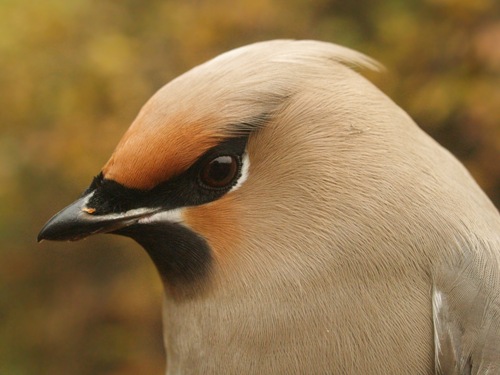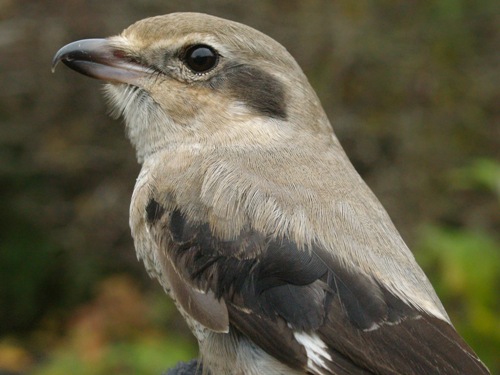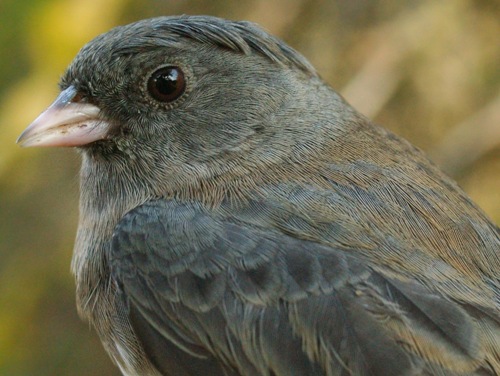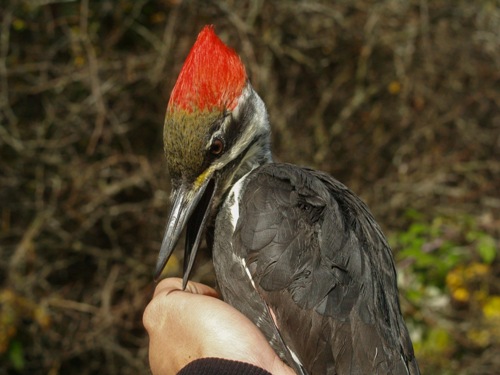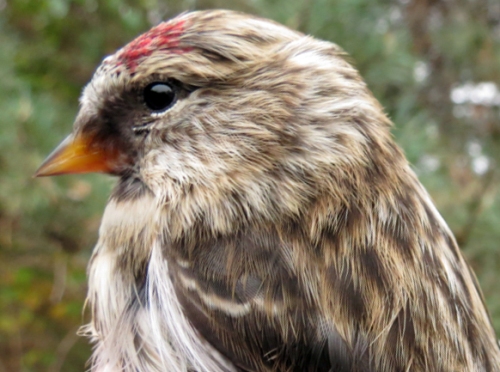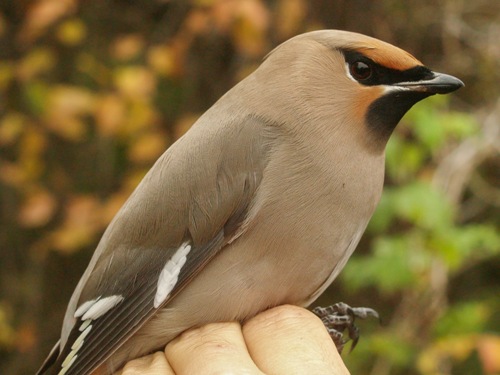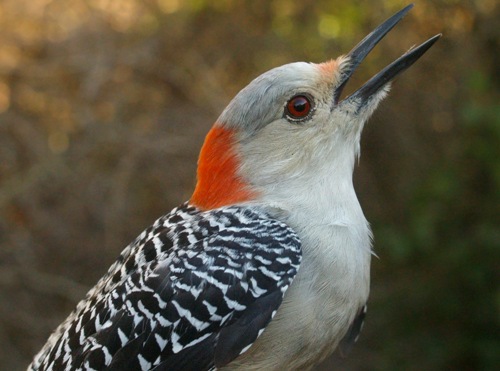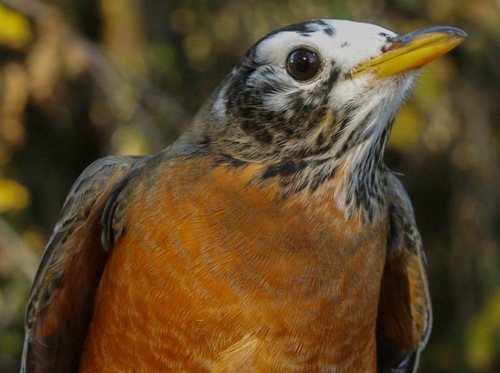|
McGILL BIRD OBSERVATORY |
||||||||||||||||||||||||||||||||||||||||||||||||||||||||||||||||||||||||
Welcome
to the McGill Bird Observatory weekly report.
Click here for a complete listing of our archives.
Banders-in-charge: Bob Barnhurst, Simon Duval, Gay Gruner Notes: Did we save the best for last? It almost seems that way! Sure, numbers were way down this week - the 153 birds we banded was our lowest weekly total of the fall, and in a sense that's reassuring, given that we want the end of our season to align with the actual conclusion of migration as much as possible. But among those 153 birds this week, we had an unusually high proportion of surprises - reflected in the photos throughout this week's report. Even with migration slowing down this week, our season total still rose to more than 4000 birds banded, just the third time in our 8-year history that we've passed that threshold. However, it is important to note that we owe thanks to remarkably good weather throughout the season, allowing us to operate nearly 400 net-hours more than in any previous fall. Taking that into account, our number of birds banded per 100 net hours actually was a bit below average, ranking fifth out of 8 years. However, new records were set by wide margins for both repeats (1089, compared to a previous high of 924 in 2008) and returns (87, nearly double the previous high of 47 in 2007). Once again this week, the weekly total of species observed (67) greatly surpassed the previous record for this time of year, in this case 58 species in both 2007 and 2010. The season total of 149 is four more than last fall, and second only to the remarkable count of 151 in our first full fall, 2005.
For the past few weeks, the number of new species observed and banded for the season has been getting smaller - not surprising, given the above-average totals in both categories this fall. However, we've often seen a spike of late-fall migrants right at the end of the season in past years, and 2012 proved no different. We had three "winter" species arrive this week - Northern Shrike, Common Redpoll, and Evening Grosbeak; all of these except the shrike were in fact new for the year. More unexpected was a Blue-winged Teal, just our second fall record for the species (the other way back on August 29, 2006). Perhaps the biggest surprise though (strange as this may seem) was the House Sparrow observed on October 28 - the first one at MBO since March 12, 2011! Worth noting though is that it was right at the periphery of our count zone - actually across the road at the back gate of the Ecomuseum, but countable, as any birds detected from within MBO are eligible for inclusion in the daily records (primarily to account for fly-overs and birds in the adjacent field, but in this case benefiting the sparrow too). Observing five species for the first time in the season was impressive enough, but we also banded four species for the first time this fall - none of which we had banded earlier in the year either! Northern Shrike and Common Redpoll appear in this list too, along with two species never before banded at MBO - Red-bellied Woodpecker and Bohemian Waxwing. Considering that we hadn't banded any "new" species at MBO since the Wood Duck in August 2011, getting two of them in the span of one week was really remarkable (especially when considering the two "new" owl species last week, which don't count toward the regular totals). That raised our total to 86 species banded this fall, substantially above the range of 74 to 78 species in all seven previous fall seasons. Finally, among the surprisingly high number of returns this week was our first Hairy Woodpecker of the year, and first American Tree Sparrow of fall. The sparrow was banded last fall on November 11, and recaptured four days later, but not recorded again the rest of winter ... so is this week's recapture indicative of site fidelity to a stopover or a wintering site? Perhaps if we recapture it again later this winter we'll have better insights.
Given that this week's 153 birds banded were well below the week 13 average of 224, it's only logical that the top species this week weren't particularly abundant. Black-capped Chickadee held on to the top spot for a second week in a row, although numbers dropped by more than half. There was a rare three-way tie for second place, with American Robin (which has been the top species in week 13 for five of the past six years), American Tree Sparrow (always in the top five for week 13), and Golden-crowned Kinglet (in unprecedented abundance, with no more than 6 of them in week 13 in any previous year). Just barely behind in fifth place was Slate-colored Junco, the only other species that has previously topped the list in week 13. Tied for sixth place were two of the large sparrows, White-throated and Fox, both reaching record high counts for fall. Rounding out our final top ten for the fall were American Goldfinch, Northern Cardinal, and a few late Ruby-crowned Kinglets. Although the cardinal count was fairly modest, combined with last week there were 11 banded in the second half of October - far more than are local residents! Canada Goose was the most abundant species observed by a wide margin, for a second consecutive week. On both of the final two mornings of the season, the daily estimated total for them was 2000, and on all other days it was at least 400. The big surprise this week was the influx of Ring-billed Gulls - there were more than 200 daily except for the final day of the season - yet we have never before had a mean daily count of greater than 20 at this time of year! The observations can be explained by the McGill farm crew being active tilling soil on the adjacent farm fields all week long. From third through seventh place were our more regular suspects for week 13 - the three black birds (Red-winged Blackbird, Common Grackle, and European Starling), plus American Robin and American Crow. Mallard numbers increased a bit this week, which is not unusual for week 13, and Black-capped Chickadee numbers remained elevated, consistent with the evidence of migration shown by the banding totals. Rounding out the list was Mourning Dove, a rare visitor to our top ten lists, but often peaking late in fall.
The owl migration slowed down even more dramatically this week than the songbirds. After all of last week's excitement, things went steadily downhill this week, with 4 Saw-whets on each of the first two nights, 2 on each of the two next ones, then a shutout ... and finally two nights lost to rain as the remnants of Hurricane Sandy moved through the Montreal area. However, this week's total of 12 Saw-whets extends the new season record to 225 banded, and we still have one full week to go in the standard owl banding season (results to follow as part of the November MBO update).
As always, it will take us a bit of time to compile and analyze all of our fall data, but we aim to complete our 2012 annual report by the end of the year. Meanwhile, here are a few preliminary highlights of the fall season. Among the 86 species banded this fall, 23 were in record high numbers - far more than one would expect on average after 8 years. This included our top species for the season, White-throated Sparrow, with 506 individuals banded. Well behind in second place was Ruby-crowned Kinglet with 353, the best total for the species since 2008. Rounding out the top three was Yellow-rumped Warbler with 292 - a good count, but far fewer than we had expected. Bunched relatively close together were Song Sparrow (216), Magnolia Warbler (203), and Slate-colored Junco (198). Following in seventh place was the big surprise for much of this fall, Swainson's Thrush, with a grand total of 176. Rounding out the top ten birds banded in fall 2012 were Black-capped Chickadee (171), American Redstart (139), and American Robin (130). As for species observed, the late season influx of Canada Geese easily pushed them to the top, with over 26,000 counted this fall, followed by Common Grackle (just over 14,000), and Red-winged Blackbird (over 10,000). The rest of the top ten were, in order, American Robin, European Starling, American Crow, White-throated Sparrow, Blue Jay, Ring-billed Gull, and Black-capped Chickadee. Many more details will follow in our annual report. While we work on that, we will continue with occasional site visits as part of our Winter Population Monitoring Program, for which we will post monthly updates until the Spring Migration Monitoring Program resumes at the end of March. Thank you again to the many dozens of volunteers who helped make this season a tremendous success!
|

